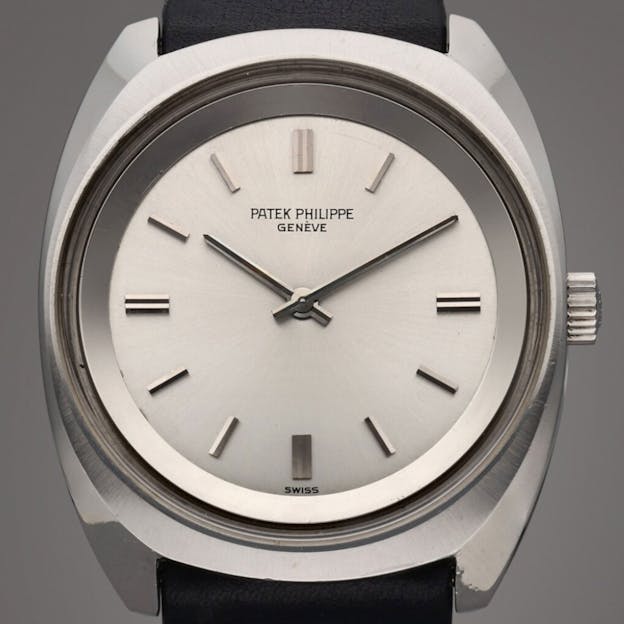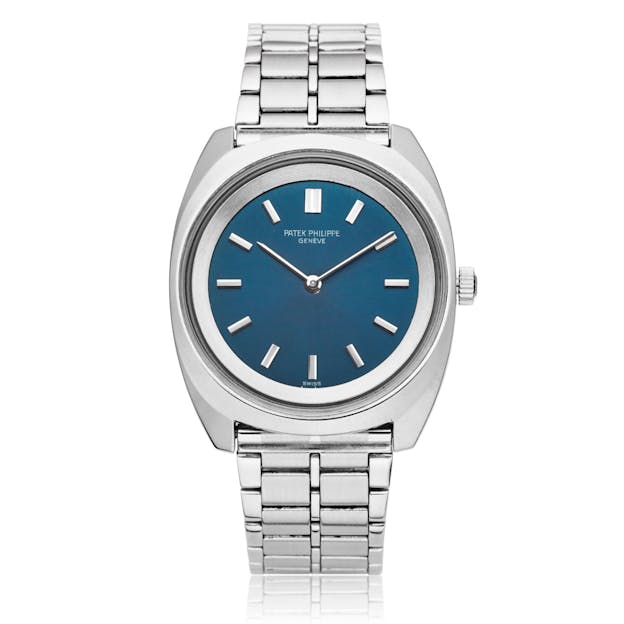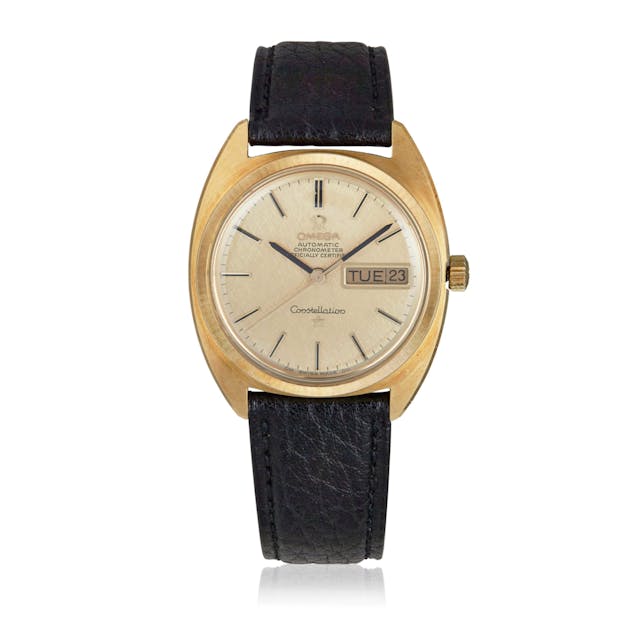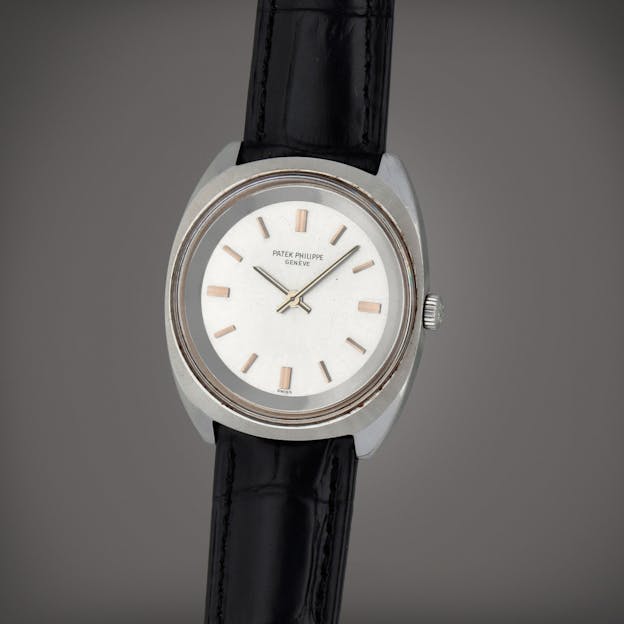Time Reconsidered: The Enduring Mystery Of The Patek Philippe Ref. 3579
Before Genta’s icon took over the watch world, Patek’s Ref. 3579, was a stainless steel sleeper that proved some of Patek’s most daring moves were also the quietest.
The world of watch journalism is anything but new. There are troves of resources buried across the horological internet — old forums, digitized catalogs, auction listings, that anyone with a little know-how can unearth. It’s what makes this world so endlessly fascinating: no matter how long you’ve been collecting, there’s always more to learn, more to uncover.
Alongside what’s floating online, there are also real-life experts — walking, talking encyclopedias of horological knowledge. Our very own Jack Forster and Tim Mosso come to mind. And for this article, which — as the title and slugline have no doubt spoiled — is about a Patek Philippe, there’s no one better to reference than John Reardon, who can speak authoritatively on just about any watch with a Calatrava Cross on the dial.

Over the course of my career, there have been very few instances where I’ve hit a wall in researching a watch. Between the dusty archives of TimeZone, early Hodinkee posts, and the ever-useful Wayback Machine (a spiritual home for those of us raised on Ebaum’s World and “The End of Ze World” flash animations), answers are usually out there. I keep a running list of watches I plan to eventually write about. I recently covered the Omega Seamaster 120 “Recife,” and now, finally, I’m turning to the Patek Philippe Ref. 3579.
What We Know

The ref. 3579 was produced between 1969 and 1974, estimates put the total production number at around 150–200 pieces. That’s a remarkably small run, especially for a watch that wasn’t officially labeled a limited edition.
To put those production numbers into context, most Patek Philippe watches with similar quantities are explicitly labeled as limited editions.

Take the Ref. 5131J, for example, renowned for its cloisonné enamel world map dial. According to estimates from Reardon, only around 150–200 pieces were produced during its run. In the 1950s, Patek created a special edition of the ref. 2481 featuring a portrait of King Saud of Saudi Arabia, limited to just 150 pieces, making it one of the rarest and most historically significant watches the brand has ever produced. Then there’s the ref. 5057R, released in 1997 to mark Patek Philippe’s 150th anniversary, also limited to 150 pieces. That model features a moon phase display, power reserve indicator, and date subdial, all housed in a rose gold case with a hobnail bezel.
But the ref. 3579 isn’t considered a limited edition in the traditional sense — it’s simply limited by circumstance, not by design.
During the same general time frame, Patek Philippe produced only two other known models in stainless steel. The ref. 3466A, well known among collectors, was produced from 1962 to 1968, with estimates suggesting between 500 and 800 examples exist. Then there’s the ref. 3574A, a far rarer piece. Believed to have been produced in the early 1970s, only 22 examples have surfaced to date, according to Collectability: ten with silvered dials, ten with patterned dials, and just two with blue dials.

As for the Ref. 3579, it appears there’s roughly a 50/50 split between white and blue dial variants. It was once rumored to have been exclusive to the Japanese market, but further research suggests that assumption stemmed from the fact that the finest examples have surfaced in Japan — not because the watch was officially restricted to that region.
Historical Context
This watch is often referred to as a “precursor to the Nautilus,” which debuted in 1976, but that comparison feels a bit overstated. Aside from the fact that both are crafted in stainless steel, the similarities are minimal. Tim Mosso offers some of the clearest context for understanding the design lineage and where the ref. 3579 truly fits.

“It’s an outgrowth of the “C-case” trend of the 1960s, particularly Omega “C” Constellation models like the 168.0009/168.0017/168.0027 that Omega launched in 1964 and ran for 14 years, and it was highly influential in the industry. Frankly, this is probably the root of Patek’s use of this style.”
Mosso went on to explain. “Size of the 3579 was between 33mm and 34mm and the manual-wind movement was the caliber 23-300PM. Caliber 23-300PM was technically interesting in its combination of a freesprung Gyromax balance, Geneva hallmark decoration, (then) current 3Hz rate, 5x adjustment plus temperatures and isochronism, and a reasonable 3mm thickness. It was a small movement at roughly 23mm in diameter but not compromised from a decoration or specification like many sub-11 ligne movements tend to be.”
The 23-300PM also appeared in a host of other Patek references: Calatravas like the 2573, 2574, 2592, 2593, 3468, and 3537, as well as in square cases like the 3405 and Ellipse models like the 3548 and 3648.
This watch hails from an era when risk-taking wasn’t just accepted, it was expected. A time when form and function moved in step, not in conflict. While the design of this piece may seem like an outlier within the Patek Philippe lineup, viewed in the broader context of the industry, it fits seamlessly, as a natural, if often overlooked, branch in the brand’s evolutionary tree.
My Take

I’ve reached out to Patek Philippe for more information on the ref. 3579, but as of now, there’s not much else we know about this watch. It’s a watch that, while potentially influential, has slipped through the cracks of horological history. A sleeper, a ghost, a watch that might’ve whispered in the ears of later designs but never got its due credit. And maybe that’s part of what makes it worth writing about. Not every watch needs to be a headline-stealer. Sometimes, it’s the quiet ones that have the best stories.
I think, as an industry, we need to do a better job of unearthing these forgotten references, these overlooked snippets of horological history—and bring their stories to light. In a landscape increasingly saturated with modern releases, rediscovering the unquestionably cool and historically significant pieces feels more essential than ever. Covering what’s new and novel is expected. But shining a light on what’s old and novel? That’s where the magic is.

